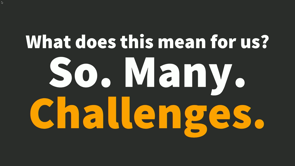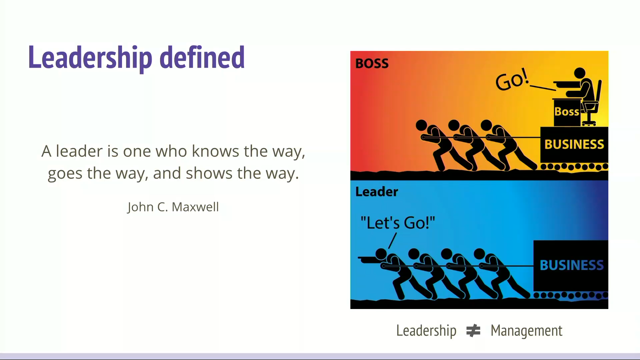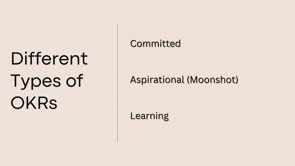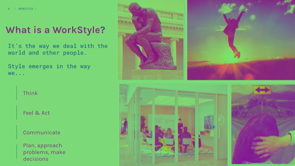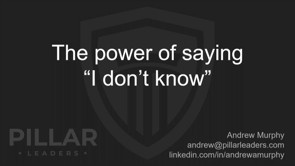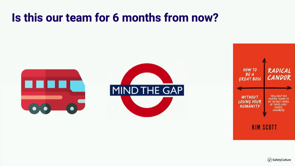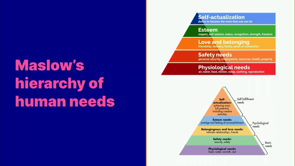
(electronic music) - Thanks everyone.
Hi Web Directions, hello, hi Sydney.
Thanks for having me.
It's really cool to be right here in Sydney Town. It's a great place, and to be talking about a topic that I've kind of been exploring over these last few months.
As Jamie mentioned, I'm a specialist at being a generalist.
Literally so that I have general manager, general is in my title, it's.
(laughs) Anyway, so there's been a little bit of a switcheroony around with the schedules, so please join me on this journey for designing inclusion into the modern day team. I wanted to talk about this topic specifically today because Mash, my dog, comes with me to work, and we both work at PetRescue.
This is her in her little get-up attire, cue your aws. Aw. (laughs) So Mash and I have never actually been in this kind of team structure before, one where we have to make so many new considerations that we've never had to experience in a co-located only environment, or the blueprints that might be available in a remote-only environment, because PetRescue is distributed across the nation, and we have people who are 100% remote, we have people co-located across multiple offices, and we have also flexible remote-working arrangements as well, and it's pretty much as distributed as you can get, asides from adding in the global side of it. But, we're still dealing with the complexities of things like timezones and whatnot.
So it's the reason why I wanted to actually embark on learning a bit more about this topic, because it's an area that I noticed that we could be potentially doing better in. There were things in the team hum, in the team harmony and communication areas that we could potentially just improve.
So come with me on this journey about pizza. I'm sure you've heard this analogy before, and if not, if you like pizza, as I do like pizza personally, I want you to also kind of just get into this, imagine this scenario where your team or your organisation might put on pizza every Friday for lunch for your team to enjoy.
That sounds pretty cool, right? The intention is really good, it's quite positive, it's free food, team celebrates together, it's a way of thanking them, and potentially just that opportunity to eat together and get that team bonding. So that's pretty cool, that's a good intention. But is there anything wrong with this picture? Picture of Hawaiian pizza.
Yes, because some people definitely just wanna watch the world burn with putting pineapple on pizza, that is my position on it, I have a very strong feel. (laughs) And this could be quite divisive in this room, but that's okay, I'm here to talk about that. If you're vegetarian or vegan, you might not necessarily enjoy this Hawaiian pizza. You might not enjoy this pizza if you don't eat beef or pork or meat, or fasting for religious or cultural reasons, if you're allergic to tomato, or have intolerances, gluten, lactose, vocally anti-pineapple on pizza.
That you're Mash, because onions are not good for dogs. Or, if you work remotely.
And you're not able to participate or join in on this team ceremony.
It's a fairly simple analogy, and a simple, very, very simple example at that, and there's certainly ways around it by actually being mindful and considering okay, well what are the dietary requirements? And what are the needs and experiences of all of the people who would be experiencing said pizza, and said team activity as well.
And we see it in a lot of meetups now.
I went to a great meetup on Monday night, the Sydney Content Strategy Meetup, and they had, I didn't put up a photo, but they had yeah, pizza there for, gluten-free pizza, vegan pizza, all sorts of different options there for pizza, but it also kind of alerted me to the thought of hey, what if you're not there physically to be able to also enjoy this? So that was really a roundabout way of me wanting to say that the first step is actually being aware of these experiences and requirements.
Again, just a super, super simple concept, but had the organisers not even been considerate of that, or knew that people were going to have I suppose, be in a minority of those who don't enjoy pineapple on pizza.
Ugh, I'll stop using that, I'm just cracking myself up internally. (laughs) But yeah, so if they didn't even think of those potential scenarios that could exclude people, then they wouldn't be in the position where they're actually considering or creating a more inclusive environment for that meetup. So, exchange pizza with any concept in a team environment. Exchange pizza being that ceremony of team bonding into something like how we communicate as a team, and what are our expectations that we set there? There's always going to be this ratio that exists in a group or community situation where there'll be the majority group and a minority group, and sometimes just by the law of ratios, you end up in the minority, and sometimes you're in the majority.
And that's okay, that's the world that we live in. But when I'm talking about conscious inclusion, this is something that I've been exploring and just finding really fascinating is of course the conscious part of it.
So having that opportunity to be aware or broaden our horizons to recognise our blind spots, what's really fascinating about this consciousness is that you don't know what you don't know, so you actually have to take in, take the effort to go and seek this knowledge and seek these learnings and understand to be able to actually gain empathy in the first place. Another point about inclusion is that I believe that we'll never 100% arrive there.
The world is just too complex, people are just too complex, and communities are complex, and there's all sorts of layers that are involved there, but we can get closer, doesn't mean that we don't need to start and make it a consideration. We can be aware of that and work towards it, and it's a work in progress.
I also believe that inclusion from the view point of looking at it from the absence of exclusion is something that's much more palatable to approach, because if you can identify your blind spots, if you can identify those areas where it might be excluding type behaviours, then potentially you can take them away or improve them or tweak them.
And my last point on this slide is that it's not just about distributed teams.
Conscious inclusion is valuable for all types of teams. The modern day team that might have people stationed at different parts of the world, or co-located teams can all benefit from this conscious inclusion, and this is the culture that one is building in your organisation.
So in summary, I've pictured here something that you may not ever be able to un-see again. (laughs) Tiger butts, they look like pandas.
They do, they do.
So the concept of the absence of exclusion for me is once you see something, it's really hard to un-see. Once you recognise something, it's there in your knowledge base, and you can do something about it.
And then the next part of conscious inclusion is creating a sense of belonging.
And pictured here is a really cute doggo in a pool of otters.
Otters, people.
I've managed to use otters in a talk, it's so great. (laughs) With exclusion being worked on, and if we can actually create environments where there's the absence of exclusion, then we have the opportunity to start working towards creating a sense of belonging.
And this is ultimately, in my view, the goal of creating a culture that is positive, healthy, humming.
Belonging.
This is being looked at by organisations across the world at the moment, and it's a conversation that's coming up time and time again, and in my research about doing inclusive, designing inclusive organisations, the notion of belonging came up time and time again, and for good reason. Culture Amp wrote this great piece, and I'll be sharing my resources at the end as a bunch of links, and I'll also tweet them out if you don't catch your slide.
Belonging is about creating a place where people feel they are respected, connected and included. That's pretty powerful stuff.
And that's possibly something that's even more key potentially for the modern distributed team where people are experiencing very different experiences, and have very unique needs.
They have a different lens to the world, that is the world that we all live in.
This article by Rebekah Bastian published on Forbes was a really great one, and I recommend this read.
She writes "by creating a culture of belonging "where employees do not feel the need "to downplay their identities, "everyone can be more successful".
Seems like a pretty good case for building up belonging. And then of course, this isn't a new concept. Maslow's hierarchy of needs identifies belongingness as a psychological need alongside basic needs such as security, safety.
The importance of this is pretty much undisputed. But how might we be able to actually achieve belongingness when the notion itself is really difficult to actually successfully do in teams that aren't distributed.
The modern day team has so many shades of modernness, from remote, really remote, remote-ish, there's different policies across different organisations, and from PetRescue's perspective, and me coming into this org and actually seeing the polarity of experiences by having all of these different work environments set up, it's created this, it has created a challenge, but it's one that we're definitely embarking on, and we want to improve it.
It's especially harder for distributed teams to achieve a sense of belonging because they're not experiencing the same face-to-face connections, the human connection that we might be used to, of seeing gestures and body language, eye contact, it creates a whole different dynamic, so that means we have to actually consciously work at improving it.
How do we find a way to develop and create that human connection when we've lost that face-to-face, what humans are used to.
So the modern team is dynamic and flexible and adaptable, and it comes in many shapes and forms.
So how do we get closer and build connections when really, we're getting further apart? Different custom remoteness settings that a team might have that all create these different layers that when we're talking about design, need to essentially be designed for.
Whether it's remote, or global remote versus local remote, timezones will make a huge difference.
Global remote brings in, and even local remote brings in cultural considerations as well.
Whether there's satellite only team members, or whether there's team members who sometimes come into the office and work remotely the rest of the time, or vice versa, it's just so dynamic right now. So this isn't an uncommon experience, there's a few folk who have come up to me today even before my talk and have said yeah, my team's distributed and some of us work remote, some of us have an office, and this is something that we've been looking at improving as well along the way, and the state of remote report that Buffer conducted, 40% of their survey participants flagged that they exist in teams that have both a location and also have to have, also have the mix of people who work remotely as well.
So I guess I refer to this as this hybrid team approach where you are actually, you actually have to design organizationally experiences that can include so many different people experiencing such different things at the same time working in a shared organisation.
So I want to bring in this concept of, that Microsoft has published in their designing for inclusion site that we might be able to bring in a principle of designing for accessibility to approach this, where if you solve for one, you can extend this to many. And I think this is something that we can potentially use as a blueprint to look at our modern day team and our distributed team members, because not only if we're solving for communication for say, if we had a whole co-location and there was true satellite team members, not only are we solving by keeping, well, rather, being consciously keeping them in mind first, we're also addressing that for new people coming on board, so new employees, for folks who are junior, for people from different backgrounds, for people returning from leave and wanting to catch up after a while.
So if we kept this kind of concept in the back of our minds, we can actually start to cascade and scale out the way that we design for these organisations. Who's job is it anyway? Who's job do you think it is? Yeah! (laughs) Yeah, look, I believe that anyone who participates in an organisation, anyone who participates in the world should be really conscious about the actions they take and helping participate in designing the world that they believe that they want to live and exist in. So it's no easy feat, but with a lot of people rallied towards this common goal, it becomes easier. It generates conversations, it makes it the mainstream, and we're changing this concept of the Overton window into embracing conscious inclusion and stamping out exclusion.
So if we looked at it from that perspective of what are the challenges that teams are experiencing with remote. From a design perspective, you look at potential challenges or problems or areas of improvement, so identifying those, and then discovering, to learn more and understand about them so that we might be able to design solutions for them. So really cool, how might we be able to design for some of these concerns that have been raised in a survey that FYI conducted, so they've also conducted a remote work report.
Things such as communication being a challenge, one of the biggest challenges for remote work. No surprises, right? Communication's a challenge for any kind of life situation. Social opportunities and loneliness and isolation are also areas that are raised as concerns. How do we consciously design for those? Setting boundaries and having the chance for organic interaction, and that's that social need as well. The list goes on, and this is a really interesting report by this, by FYI by the way, there's a lot of statements and comments in there that builds up these stories and these narratives of everyone's, or different people's experiences in these situations. So I propose that if you don't have a culture playbook or a playbook for your team already, to maybe start developing one, creating one, or even just starting the conversation to work towards these set of agreements amongst your team. Agreements or guidelines to our acceptable way that we actually want to contractually work together. By even having that chance for that forum of conversation, we can recognise potential blind spots that we have, things that we've taken for granted, things that we've thought oh, didn't everyone know that? I didn't know that, I never asked the question or I wasn't there for that meeting.
Great, okay, so let's then have a look at that problem and unpack it.
So using that design thinking approach and then creating these rules of engagement and guidelines for interactions. What's important about having a culture playbook in my opinion, and something that we're working towards building up as a team together, and getting everyone involved with doing it, there's no, well, we're a charity, so there's no dedicated culture impact team as such, that's pretty much me and the team.
But what having a playbook that identifies and actually highlights and creates visibility around these things is, is your organisational culture is saying this is important.
This is valuable to us for us to actually embrace the differences and uniqueness that we have amongst the team. We embrace the inclusion paradox by actually just talking about it.
Chapters in your culture playbook could potentially include communication and collaboration, social, that's one, social connections and opportunities is another, and health and wellbeing.
As a start, looking back at those challenges that were identified earlier.
So with communication and collaboration as a chapter in your playbook, potentially you could start by asking a few questions and just having a ponder about and discussion with your team about what your team actually stands for in that interaction in that playbook.
Does your team encourage over-communication? Do we know what the channels we have and the tools we use are and how we use them? What are the rules of engagement there? Agreements on usage.
What's our response expectation time there? How do we actually asynchronously work if we're dealing with different timezones? I'll go into this a bit in the next slide.
Do we have an expectation to document everything? If not, why not? Because, and this is I suppose the next point of being considerate, is this is a situation where we could actually extend to many by solving for one by documenting a hallway conversation or a water cooler conversation, by actually documenting that, whether that's lightweight or you're actually heavily documented because there might have been decisions that were made along the way. Well actually explicitly saying that we want to document these so that everyone has the shared equal access to these conversations and this information and background that actually equip them to do their roles and jobs properly.
We're saying that it's important and we value it. So I think that's a really good thing.
It could seem really obvious, but having these kind of rules of engagements and agreements that we have is something that even just the notion of being, creating that awareness about it, talking about the blind spots we have.
And if you use Slack as an internal messaging tool or similar, you could even look at, yeah, having your agreement, so having your etiquette guidelines out.
How might your team build out your, be able to have, set those boundaries, what are the shared expectations? What's okay? What's not okay? How do we also take responsibility? This is an example of Buffer's Slack agreements, and essentially it, that discussion would have led into these guidelines being a statement of okay, well, I'm sick of, potentially, I'm just hypothesising here.
Potentially, I'm sick of getting notifications all the time, and I'm completely inundated with it, and it's really hard for me to switch off and go offline. Well, there's responsibility on both parts. There's a responsibility across the org as well to be able to set that expectation because coming at it from different lens, if you're someone who's new in the org, you're a junior, you've just come in, chances are you're not going to know what the standards are that are acceptable, so why not actually spell it out? Actually say okay, well who's responsibilities are these? And what are the boundaries that we permit and actually encourage at work? You could use apps such as Send It Later if you're using Slack in the room, which doesn't fire a notification until it's the local time for the recipient. Something as simple as this, there's plenty of plug-ins. This one's a paid one, we are only just exploring it, haven't used it yet, but I've heard good things. So this is a potential tool that can be used to help set those boundaries.
Another example, on your position on synchronous versus asynchronous communication. In the blueprint of co-located teams, you would have ceremonies like meetings, and you would have ceremonies like documentation or just face-to-face coms that happen naturally. But what happens when people can't physically be there for that event? What happens when we are making decisions and making changes, and then we switch over in timezones? That's the modern day team that's evolving right in front of us right now.
As an example with how our team's distributed, we've got a three hour timezone difference to deal with, and it's pretty, it's not huge, but it's enough to say okay, well our window of actually being able to interact with each other is much smaller. We want to be able to collaborate and get work done together and be really effective and work on the most impactful stuff, but it's really hard sometimes to actually know what conversations have been had versus not been had, and where are they documented? So setting up your synch and asynch guidelines could be very much a statement of we go asynchronous first, and we assume that everyone is on a different timezone to us, and therefore we document it, we provide guidelines on how one might be able to access those, and how someone might be able to catch up with a really important announcement that's happened and might have just been gotten lost in a social, in a channel out in the wild.
So again, being able to solve these for remote first, with remote first in mind, means that we can actually extend this out to something that will benefit.
New starters, people onboarding.
Isn't this kind of documentation really handy to understand the background of a project or a programme or a product? Actually having this mapped out.
Super simple stuff, but sometimes when it just goes on with the motions, potentially maybe the documentation guidelines aren't as rigid and tight as you would've liked them maybe. You can use a tool like everytimezone.com to find crossover times.
There's plenty of tools out there, so if you need to do some kind of synchronous work, then actually adjusting your expectations around timezones can be something that is really beneficial and adds to that sense of belonging for the team. If you're a team member who gets constant meeting invites to a meeting that's during your lunch break in your timezone or first thing in the morning or in the evening, and that's continuous, it can start to feel like that person in the pizza lunch situation. You might start to feel okay, well, yep, sure, I'm the only one experiencing this, and therefore I don't want to inconvenience everyone else. Mm mm.
You're part of the team as well, and for, if we recognise this, if we see this, then maybe we should flip over the importance and then have a more equal viewpoint and be really conscious of it.
Meeting etiquette.
So in the modern day team, video meetings are obviously a thing, we use Zoom at PetRescue, and there's lots of actually playbooks and guidelines out there with healthy video etiquette but there's, I suppose this school of thought of folks who are really used to that traditional structure of co-located, in-office meeting type structures, or this is how one might run a meeting that some of these things can be easily skipped or skimmed over, and it's really up to you and your org as to what you find is really key or important here. Potentially hearing the stories around and experiences that people, different people might have is having, it's so simple.
I keep saying this, but it really is, but without spelling it out it's something that we easily just skim over.
Having an agenda, having a meeting request with actually the key info in the background that you need to access is something that time and time folks say oh yeah, I don't have an agenda for this, I don't know what this meeting's about, but I'll be there because I've been invited. The problem with this is what someone could potentially feel as a sense and an individual experience is what kind of conversation has been had at the water cooler, over coffee, in a hallway, that has background to this that I don't know about? And you start to, if that starts to constantly happen, you start to feel like you're not equipped to actually do your job.
Everyone else in the room that I'm dialling in for already know what's going on, and I'm just getting caught up.
Am I an afterthought? It's not really the vibe that we want to create, so being conscious of it means that you can actually be prepped, and these are things that Skylight organisation lead that are really positive, setting an agenda, background context, having the link to Zoom actually in the meeting invite, and being on time.
There's nothing worse than being someone who's dialling in remotely and just kind of waiting for people to rock up.
I'm still here, alone. (laughs) So just even those kind of courtesies, those common courtesies that maybe, maybe they easily slip when you're in person because you see across the room, hey, Phil's across the room, he's not in the board room yet, so I'll just keep tapping away at what I'm doing until Phil gets up, and then we'll all move over there into this shared meeting.
We don't have those same experiences when you're working remotely, so it's really easy to discard those, yeah, those, words, nevermind. (laughs) So yeah, the other part of it is if you're wanting to design in social time for pre-meeting, having recorded sessions, one person per screen. This one is, so yeah, again, really, really basic, but it really creates that sense of equal presence in the room in a meeting. And it's something that yeah, you have to push for a little bit to not have everyone huddled around a conference screen, but it really makes a difference.
So there's stories that can contribute to this, right? You can feed in these stories and conversations that you have into your playbook, and we can approach it from a design thinking viewpoint. These are how we design and build for products. Why not apply the same for organisational design where we might build out a, okay, here's a situation, as a person working remotely in a team that is also co-located, when there are multiple people on one screen in a video call, it makes me feel like an outsider because I might miss some of the mini gestures and side comments that happen that I can't see or hear properly.
Building out these stories, you can actually get some more insights and empathy for these situations because it's easy to kind of go about your working day. So I have a few, couple other examples in here, but I'll skim over them.
Communication and collaboration, does your playbook endorse having informal conversations? How do we get that social time where it is just our virtual presence that come to the room, and it's usually in a meeting sense, how do we actually encourage that so that people, being that that is one of the concerns that folks have raised, how do we actually build that in naturally in an unnatural setting? Language and terminology.
This was the part in my talk where I thought ooh, I can really just go down this track, and that's a whole nother one or two or three talks, so I'm not going to do that to you.
But I wanted to bring it to front of mind that this is something that you might want to include in your playbook. Does any of your terminology exclude for any reason at all? Do you still see the signs of ableist or sexist type language? Are there any differences in how one might perceive a statement? So examples are if you say, if you say hey guys constantly in your Slack channel, you've still got work to do.
If you say that's crazy all the time in your Slack channels or your conversations, you've still got work to do. And cultural differences and backgrounds, things that we take for granted, and I've got a lot to work, I've got a huge amount of work to do with this, right? To actually have more awareness because I only just started recently travelling in my life, so I'm starting to get more of an understanding of differences here, but something as simple as saying hey, you're killing it, is good and bad depending on which cultural context you're coming from.
So your playbook could, see how this could be a whole nother talk? So your playbook could really list some of these out. On setting boundaries, this was one of the key areas that was a concern for folks who are working in remote settings.
So it was one of, it was one of the top five challenges in the survey, so this is a big one to take note of that people are struggling with being able to set boundaries, and again, these are the stories that can feed into your own cultural playbook because not everyone is going to be experiencing the same things. Health and wellbeing.
And this is a huge, also whole nother talk. But what are the entitlements that, these are the questions you could ask, what are the entitlements that we take for granted? Are we setting shared expectations, and does everyone know about them? Is there any entitlement to knowing that if you've worked in career, life, for a long time and many years, is there anything that you take for granted with being able to take entitlements like annual leave? Health, ooh, actually mental health leave? Is that an acceptable conversation that you have? And is it an open and safe one that you can have in your org? Because funnily enough, it's the people who are familiar with having entitlements that are aware of the entitlements.
So maybe if we put these conversations on the table, we'll have more of an opportunity to include people across the team.
And again, design for one and we're extending to many. I'll skip over this one, but it's really worth spelling out things like your leave entitlements in your playbook. So how you have your rules of engagement with switching off on sick days, and balanced work hours and what we encourage as breaks for everyone, not just people working in the office and where you can actually physically see people taking a break.
And yeah, access to perks, if there's perks in the office available and things that are about improving the wellness of your employees and your teammates, then why not extend that to your remote team as well? And you can do that via a whole plethora of means, but thinking about them as remote first gives you that chance to think okay, well how can we include and not exclude? Building up social connections was another huge important one.
So the sense of belonging, community, connection, building trust, that team feeling, that's what, well, you know, that's one of those key areas that we really wanna aspire to get to that point too because connections help build trust, and connection, and deeper, more meaningful relationships with your team, and that's a huge beneficial thing.
The more you know your teammates, the more you can understand what your blind spots are by learning from their experiences as well. Again, how are we building this sense of belonging in an environment where teams are getting further and further apart? I'm quite over time, so I'm just going to skip through a few of these final parts here.
But building in that consideration of that conscious inclusion when it comes to events and celebrations.
How do we extend this to teammates who aren't present in the room with us? Is there things like that we can extend their expense coverage of that, having satellite events, how do you handle your all-hands type meetings? How do you handle your off-sites? Team fun, there's lots of resources out there for, just because you're remote, doesn't mean you can't participate in some of these cool little online and digital first activities.
Yeah, Pictionary, it's terrible. (laughs) But yeah, you can do something like building a shared Spotify, or whatever tool of your choice playlist for the team. That's cool, you get to understand everyone's music tastes, and find out what, it's a conversation starter, right? Potentially you could do, actually start some connection type initiatives, and they don't have to be huge. Things like what's the weather you're experiencing where you are today? What are you seeing? What's your world look like right now? What's your world view? What's your dog doing? Are they being a silly, silly bean like Mash? Your lunch, your pets, social clubs that you might have that you build around those micro-cultures that can develop that we want to celebrate and enhance.
Fitness challenges, foodie challenges, sharing recipes, it's all fun stuff that doesn't need to be limited to just in-person experiences.
Is emoji and gif expression usage encouraged? So this is about being seen, being social, and yeah, why not have the fun as well? We can be high-performing teams, but also be able to have fun.
There's some great tools which I'll share again at the end. Icebreaker has some just great question packs where you might wanna just build in some social time pre-video chat, and ask the team a couple of questions.
And that just randomises.
Kahoot is an online game that you can collaborate multiplayer.
And yeah, so on that note of gathering stories, find out what might work for your team.
Get to know your team, have the conversation so that we can recognise those areas that are potentially, yeah, blind spots for us, and that we might be able to work towards that sense of belonging which we are holding true as something that is vital for teams that are distributed, that are further apart.
You might not get the answer straight away and you might have to build up this kind of trust, so maybe send out a few EasyPoll surveys.
Find out whether you do have that healthy team environment that does encourage safety.
And asking, maybe if you wanna make it anonymous or not, but finding out whether people are comfortable in switching off and going offline at the end of their work day.
And do they know what the end of that work day actually looks like, or are they just forever connected? What does your team culture playbook say is acceptable in that rules of engagement part? So I'm gonna skip over that.
But, okay, so I want to make a point that remote working hasn't actually introduced these challenges, the modern day team hasn't introduced these challenges.
These are things that have fundamentally existed in the core of any team structure, we just now have to be super mindful of it, that it's essentially just exposing and taking the mask off what could have been potentially a little harder to navigate around in the co-located team traditional sense. But this is stuff that existed.
If your documentation's crap, it's just being amplified essentially, or being uncovered by remote teams and people wanting access to information.
If your access to information is crap, then it's just amplified.
Cool, okay.
So quick summary.
We went through building conscious inclusion and building up that muscle, viewing inclusion as the absence of exclusion, recognising our blind spots and potentially solving for one to extend to many, building a culture of belonging and the importance of that, building a playbook with remote first ideas, contributing to it, gathering stories, and that pineapple on pizza is bad.
Thanks for listening, I appreciate it. (laughs) Cheers. (audience applauds)
(electronic music)



